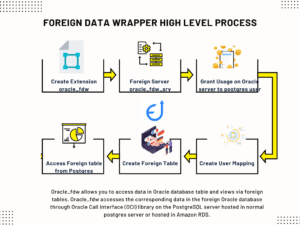
Inventory Transactions in Oracle Apps R12: A Complete Guide
Managing inventory efficiently is critical in any supply chain. Oracle E-Business Suite (EBS) R12 offers a powerful Inventory Management module designed to handle complex material movements, ensure accurate quantity tracking, and support seamless integrations. This guide explains how inventory transactions processes in Oracle Apps R12, the APIs involved, and the database structures that store this data.
What Are Inventory Transactions in Oracle Apps R12?
Inventory transactions in Oracle R12 record every physical movement, quantity adjustment, or status change of inventory items in your warehouse or organization. Each transaction is a critical part of maintaining inventory accuracy and traceability.
Oracle identifies each transaction using two core attributes:
- Transaction Source Type — Defines where the transaction originates, such as a purchase order, sales order, WIP job, or internal requisition.
- Transaction Action — Specifies what actually happens to the inventory, such as a receipt, issue, adjustment, or transfer.
By storing these records, Oracle enables auditability, supports financial integration, and ensures real-time visibility into inventory operations.
Key Inventory Transactions Categories in Oracle Apps R12
Oracle Inventory offers a wide range of standard transaction types, grouped into logical categories that reflect typical business processes. Understanding these categories helps you design better workflows and reports.
📥 Receiving Transactions
Receiving transactions log incoming materials into inventory. These are the first point of entry for goods, whether from external vendors, customer returns, or internal transfers. They ensure that stock is accounted for as soon as it arrives and ready for further processing.
Below are the Examples of Receiving Transactions in Oracle Apps R12:
- Purchase Order Receipt — Goods received from suppliers, ready to stock or inspect.
- RMA Receipt — Returned merchandise from customers, for restocking or disposal.
- Internal Requisition Receipt — Inventory transferred from another internal organization.
📤 Issuing Transactions
Issuing transactions is the outbound movement of goods from your warehouse. They reduce on-hand stock and are essential for customer shipments, production supply, or internal consumption.
Below are the Examples of Issuing Transactions in Oracle Apps R12:
- Sales Order Issue — Goods shipped to fulfill customer orders.
- WIP Component Issue — Raw materials issued to manufacturing jobs.
- Miscellaneous Issue — Stock issued for internal purposes such as R&D, samples, or unplanned usage.
🔄 Transfer Transactions
Transfer transactions record internal stock relocations. They help balance inventory levels across subinventories or organizations and optimize stock utilization.
Below are the Examples of Transfer Transactions in Oracle Apps R12:
- Inter-Org Transfer — Transfers inventory between two different inventory organizations, updating both stock and cost records.
- Subinventory Transfer — Moves inventory within the same organization between different subinventories.
🔧 Adjustment and Costing Transactions
Adjustment transactions allow you to reconcile inventory records with physical counts and update item costs. These are crucial for maintaining stock accuracy and reflecting real-world values.
Below are the Examples of Adjustment and Costing Transactions in Oracle Apps R12:
- Cycle Count Adjustment — Corrects discrepancies found during periodic cycle counts.
- Physical Inventory Adjustment — Reconciles balances after a full inventory count.
- Cost Update — Adjusts the financial value of items to reflect market or accounting changes.
🔷 Inventory Transactions APIs in Oracle Apps R12: Functional Overview
Oracle R12 provides several public inventory transactions APIs to automate, validate, and process transactions, quantities, and adjustments programmatically. Below are the key APIs and their functional purposes:
🔧 INV_TXN_MANAGER_PUB.process_transactions
This is the core API for processing inventory transactions in Oracle Apps R12 — the backbone of all material movement in Oracle Inventory.
- Used to process transactions like issues, receipts, transfers, adjustments.
- Takes a table of validated transaction records and pushes them through the Inventory Transaction Manager.
- Updates quantities, reservations, and financial distributions accordingly.
- Records get inserted into base tables (MTL_MATERIAL_TRANSACTIONS, MTL_TRANSACTION_LOTS, etc.) after processing.
✅ Use case: Automate high-volume inshipments, internal transfers, or cycle count adjustments programmatically in Oracle Apps R12.
🔍 INV_QUANTITY_TREE_PUB.query_quantities
This API retrieves onhand quantity – real-time quantity information at various levels:
- Quantity on Hand
- Quantity Reserved
- Quantity Available to Transact
- Quantity Available to Reserve
It factors in existing reservations and pending transactions to show what’s truly available.
✅ Use case: Build real-time ATP (Available to Promise) checks in custom order-entry screens or planning dashboards.
🗃 INV_RESERVATION_PUB.create_reservation
This API to create item reservations against a demand source (like a sales order or work order).
- Allows you to allocate stock to specific demands.
- Ensures reserved quantities are protected from being used by other transactions.
✅ Use case: Pre-allocate stock for critical customer orders or production runs.
🧹 INV_RESERVATION_PUB.delete_reservation
Deletes an existing reservation for a given item and demand source.
- Frees up the previously reserved stock for other demands.
- Useful for canceling orders or reassigning inventory to higher-priority needs.
✅ Use case: Remove outdated or canceled reservations programmatically.
📝 INV_RESERVATION_PUB.update_reservation
Updates an existing reservation — adjusting the quantity, dates, or demand source as required.
- Supports dynamic changes in planning or demand fulfillment.
✅ Use case: Modify reservations to reflect changes in customer orders or production schedules.
🔄 INV_MATERIAL_STATUS_PUB.update_status
Updates the material status of an inventory item or lot/serial in a specific location.
- Controls whether items can be picked, issued, or reserved.
- Supports inventory holds, quarantines, or restricted-use scenarios.
✅ Use case: Programmatically block or unblock inventory for inspection, quality holds, or compliance.
🧩 INV_ONHAND_BALANCE_PUB.update_onhand_balances
Directly adjusts on-hand quantities for an item at a specific location.
- Typically used for initial data loads, data correction, or emergency adjustments.
✅ Use case: Load opening balances during implementation or correct discrepancies outside of standard processes.
🔧 INV_ADJUSTMENT_PUB.process_adjustment
Processes a quantity adjustment through the Inventory Transaction Manager.
- Similar to process_transactions, but focused specifically on adjustment actions.
✅ Use case: Record authorized adjustments resulting from cycle counts or physical counts.
Error Handling in Inventory Transactions in Oracle Apps R12
Even with robust APIs, transactions can fail due to invalid data or business rule violations. Oracle captures these failures systematically for analysis and resolution.
| Table / Structure | Purpose |
|---|---|
| MTL_TRANSACTIONS_INTERFACE | Staging area for incoming transactions |
| MTL_MATERIAL_TRANSACTIONS_TEMP | Temporary records during processing |
| MTL_INTERFACE_ERRORS | Interface Error details for failed records |
| INV_TXN_MANAGER_PUB.G_ERROR_TBL | PL/SQL structure for API errors. |
Common issues:
- Insufficient on-hand stock.
- Invalid or inactive subinventory/locator.
- Closed accounting periods.
- Lot/serial mismatches.
On-Hand vs. Available Quantity: Why It Matters
Not all stock physically present is actually available to fulfill new orders.
- On-Hand Quantity (QOH): What’s in stock physically.
- Available Quantity: What’s free, factoring in reservations and pending transactions.
Formula:
Available = QOH – Reservations – Pending Transactions
For accuracy, always use INV_QUANTITY_TREE_PUB.query_quantities.
Final Thoughts of Inventory Transactions in Oracle Apps R12
Oracle Inventory in R12 is more than just a record-keeping tool — it’s a real-time, highly configurable inventory engine.
By understanding how to use APIs like INV_TXN_MANAGER_PUB, INV_QUANTITY_TREE_PUB, INV_RESERVATION_PUB, and others, you can automate processes, ensure accurate data, and deliver seamless integrations.
Mastering these APIs and their functionality gives you the tools to build scalable, reliable inventory solutions that align with your business goals.



